Angkor Wat and Siem Reap, Cambodia, 17 - 20 April 2011 (edited)
Hootoksi Tyabji, Shah Alam, May 2011
 Angkor Wat, is the largest religious temple complex in the world. Having read much about it and seen so many spectacular photographs, we decided it was time for a visit! Along with Sinia my good friend from Delhi, we flew from Kuala Lumpur into Siem Reap and were met at the airport by our guide Sunam and the driver of the hotel minivan who stayed with us for the duration of our visit.
Angkor Wat, is the largest religious temple complex in the world. Having read much about it and seen so many spectacular photographs, we decided it was time for a visit! Along with Sinia my good friend from Delhi, we flew from Kuala Lumpur into Siem Reap and were met at the airport by our guide Sunam and the driver of the hotel minivan who stayed with us for the duration of our visit.
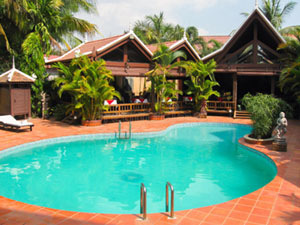 We checked into the Angkoriana Hotel which was comfortable and easy on our wallets, but our rooms were on the second floor and after walking all day around the temples, the extra climb up those steep steps was quite a challenge!
We checked into the Angkoriana Hotel which was comfortable and easy on our wallets, but our rooms were on the second floor and after walking all day around the temples, the extra climb up those steep steps was quite a challenge!
None of us had any idea of the scale and scope of the temple ruins. The three days we spent wandering around gave us barely a glimpse into the architecture, engineering, history, and artistry of the ancient Khmer culture.
We decided on temples and areas that we wanted to visit in the 400 acres of the complex and we gave ourselves time to wander around, each at our own pace, feasting our eyes on what was on display before us!
“The city of Angkor served as the royal center from which a dynasty of Khmer kings ruled one of the largest, most prosperous, and most sophisticated kingdoms in the history of South East Asia. From the end of the 9th century until early in the 13th century, numerous construction projects were undertaken, the most notable of which was Angkor Wat. It was built by Suryavarman II as a vast funerary temple within which his remains were to be deposited. Construction is believed to have spanned some three decades.
"All of the original religious motifs derived from Hinduism, and the temple was dedicated to the gods Shiva, Brahma, and Vishnu. The five central towers of Angkor Wat symbolize the peaks of Mount Meru which according to Hindu mythology is the dwelling place of the gods. The mountain is said to be surrounded by an ocean, and the complex’s enormous moat suggests the oceans at the edge of the world. A 617-foot (188-metre) bridge allows access to the site. The temple is reached by passing through three galleries, each separated by a paved walkway. The temple walls are covered with bas-relief sculptures of very high quality, representing Hindu gods and ancient Khmer scenes as well as scenes from the Mahabharata and the Ramayana.
"After the Cham people of Indochina sacked Angkor in 1177, King Jayavarman VII (reigned 1181–c. 1220) decided that the Hindu gods had failed him. When he built a new capital nearby, Angkor Thom, he dedicated it to Buddhism. Thereafter Angkor Wat became a Buddhist shrine, and many of its carvings and statues of Hindu deities were replaced by Buddhist art.
"In the early 15th century Angkor was abandoned. Although Theravada Buddhist monks attempted to maintain Angkor Wat, pillaging, water seepage, and disuse took their toll on the complex. In the 20th century, various restoration programs were undertaken, but they were suspended amid the political unrest that engulfed Cambodia in the 1970s. When work resumed in the mid-1980s, the required repairs were extensive.” - Encyclopedia Brittanica.
The Angkor complex cover a rectangular area of 402 acres, defined by a laetrile wall. At the centre stands Angkor Wat, the largest and most famous of all the temples and one of the Seven Wonders of the World. The entire complex is surrounded by sculpted lawns and magnificent trees - raintrees, oaks, mahoganies, and many species of towering rainforest trees.
We entered Angkor Thom City from the south gate. It was the last capital of the Khmer empire encompassing terraces of elephants which are almost a quarter mile long, extremely high, and carved from stone. We drove past the hulking Baphuon Temple which has three levels and a rounded top and is in a state of considerable ruin.
The Bayon temple was most impressive with its four smiling images of bodhisattva Avalokiteshvara, each one facing outward and keeping watch at each compass point. There are 51 smaller towers surrounding Bayon, each with four faces of its own.
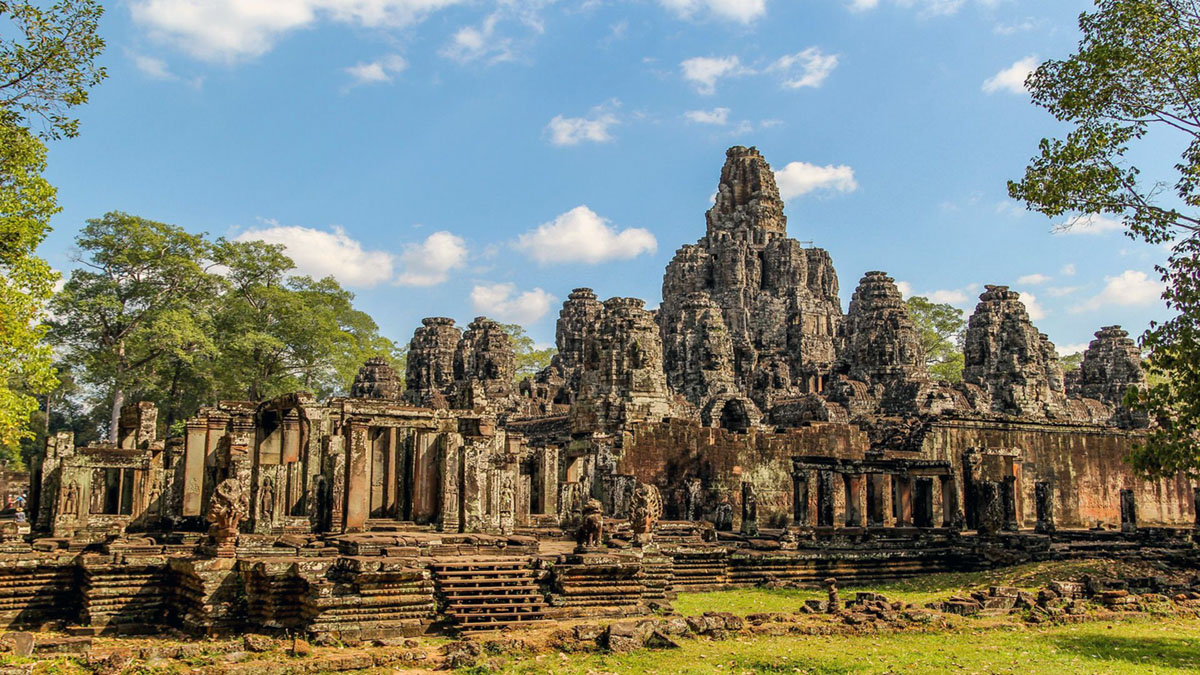
We made our way to the main Angkor Wat temple around 4 pm and stayed till sunset, enjoying the carvings in the shifting light! The temple grounds are surrounded by a very wide moat and you must walk across a causeway to reach it. The grounds cover an area of about 82 hectares, comparable in size to the Imperial Palace in Beijing. Angkor Wat is the largest religious building in the world with vast labyrinths of passages, pillars, and courtyards and five lotus flower towers at its centre. It features some of the most magnificent and famous stone carvings and murals found in Cambodia.
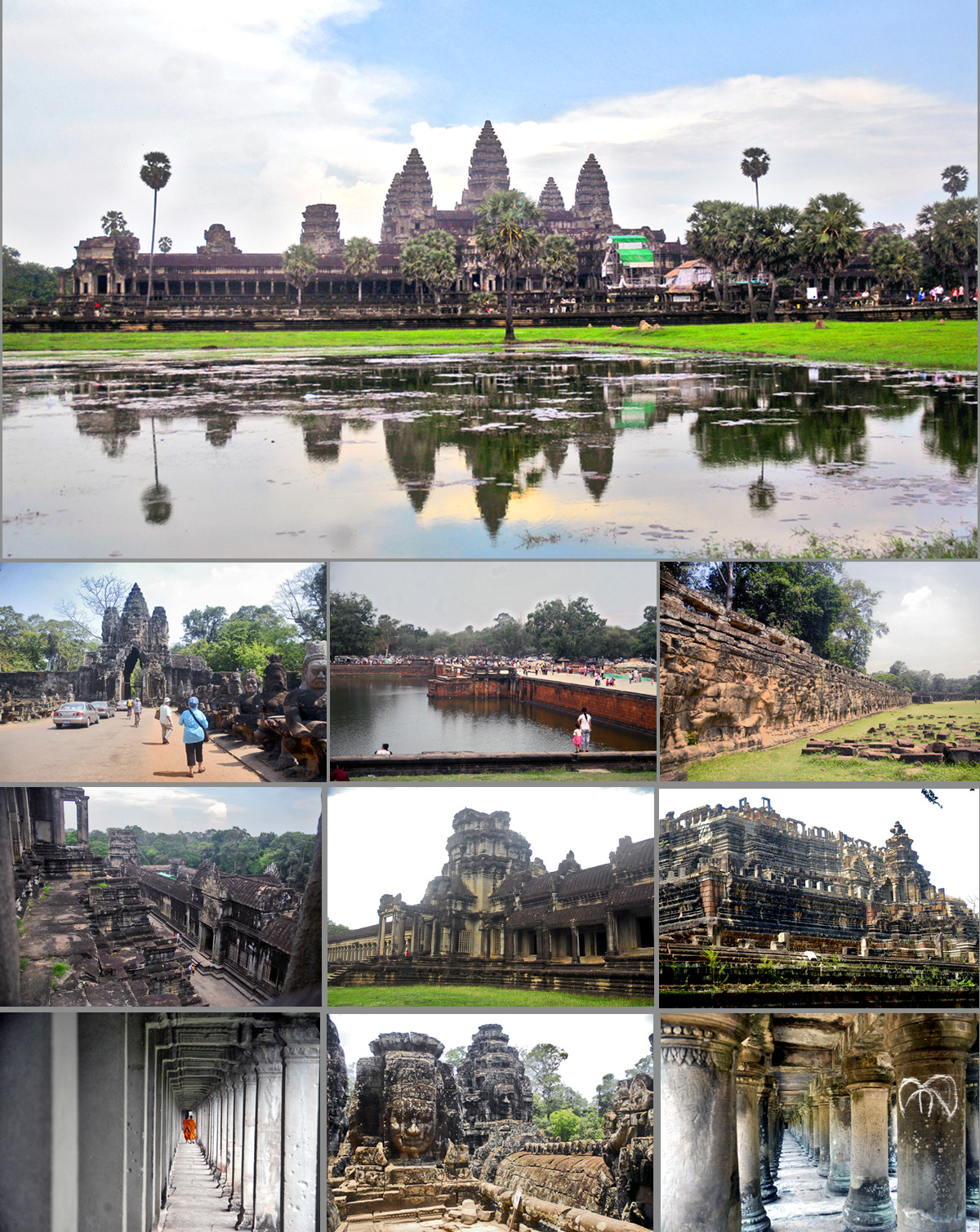
Cambodians, like all Southeast Asians, are very friendly and open, and seldom let language come in the way of exchanging comments and smiles with foreigners.
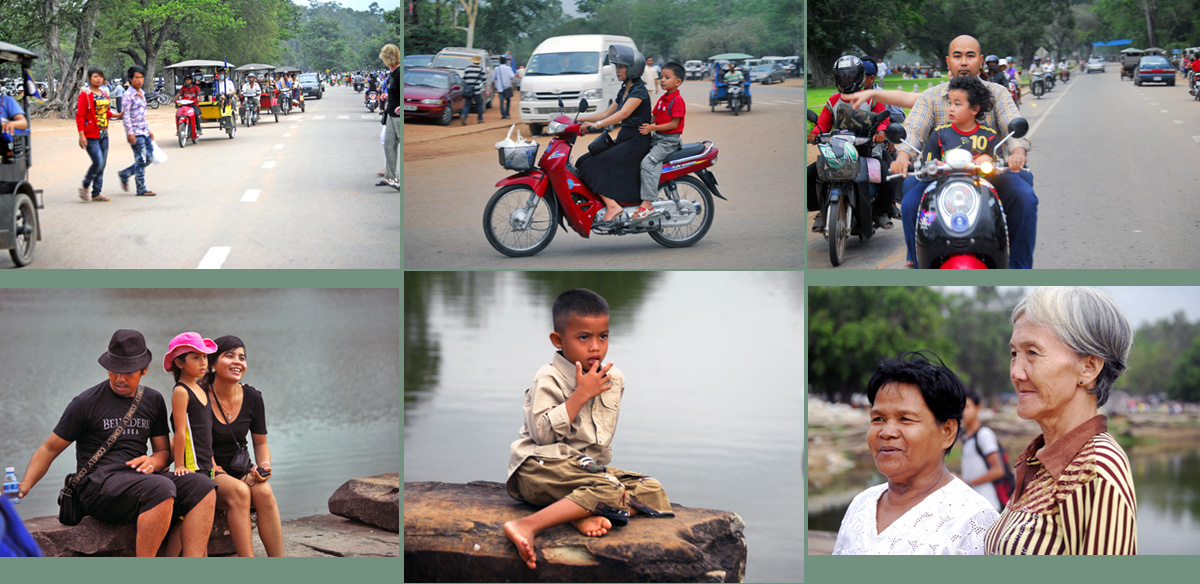

We visited Banteay Srei which was built in a hard, pink sandstone and is also known as the Citadel of Women. It is a small temple adorned with the most beautiful carvings
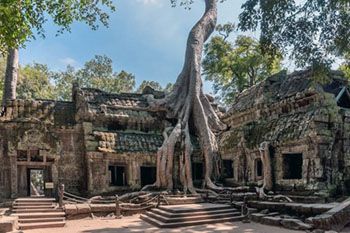
We drove to Ta Prohm which we thought was extraordinarily beautiful as nature has taken it over and the trees have made it their own!
We also visited Preah Khan the “Sacred Sword” complex which was used as a monastery and teaching complex.
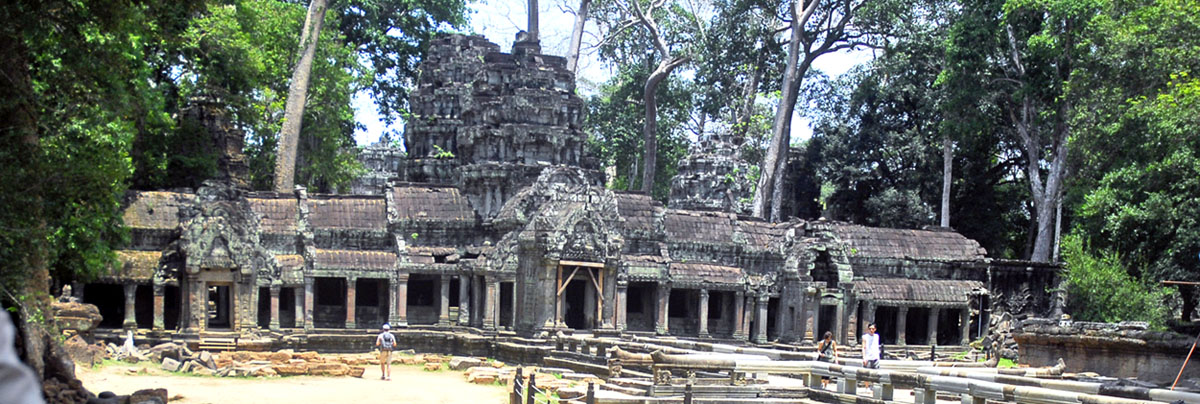
Neak Pean which means coiled serpent (you see them coiled at the base of the temple) stands in a pool of water.
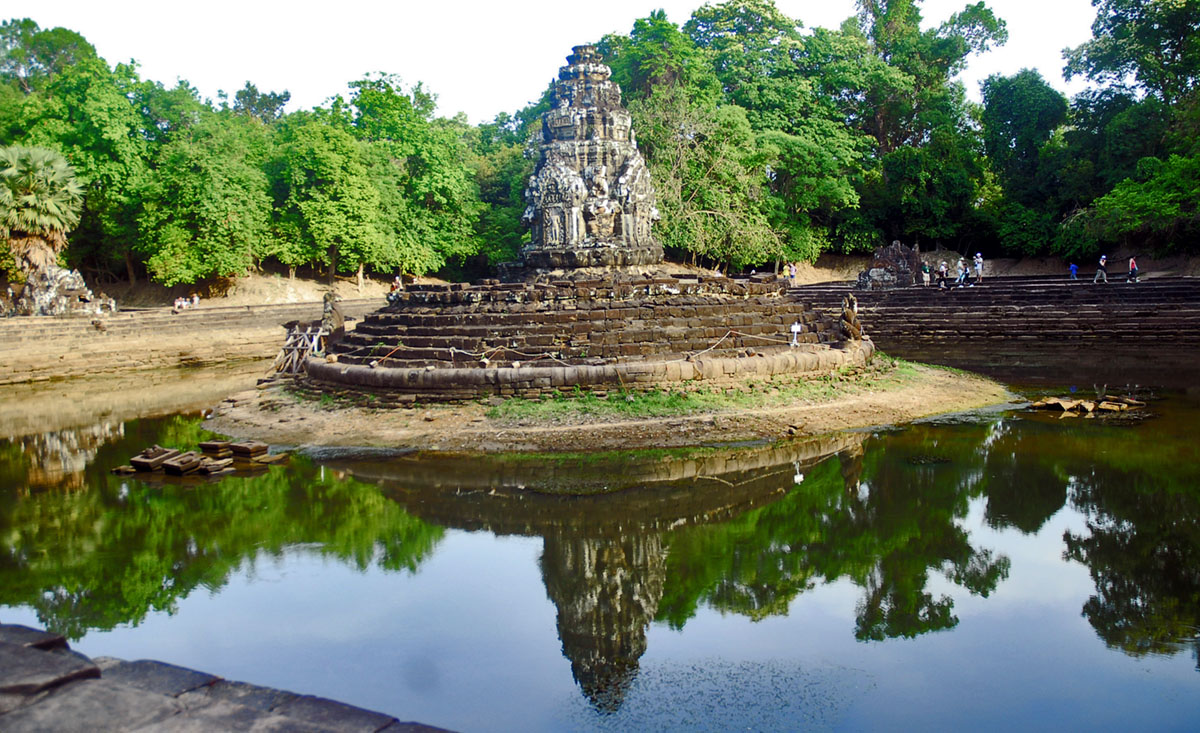
Below it are 4 grottoes, each a chapel housing a water spout in different shapes - an elephant head, a horse’s head, a human head and a lion's head. It was believed that the water flowing out of these had healing properties.
After the temples we visited Chong Kneas floating village at the edge of the Tonle Sap Lake, the largest body of fresh water in southeast Asia.
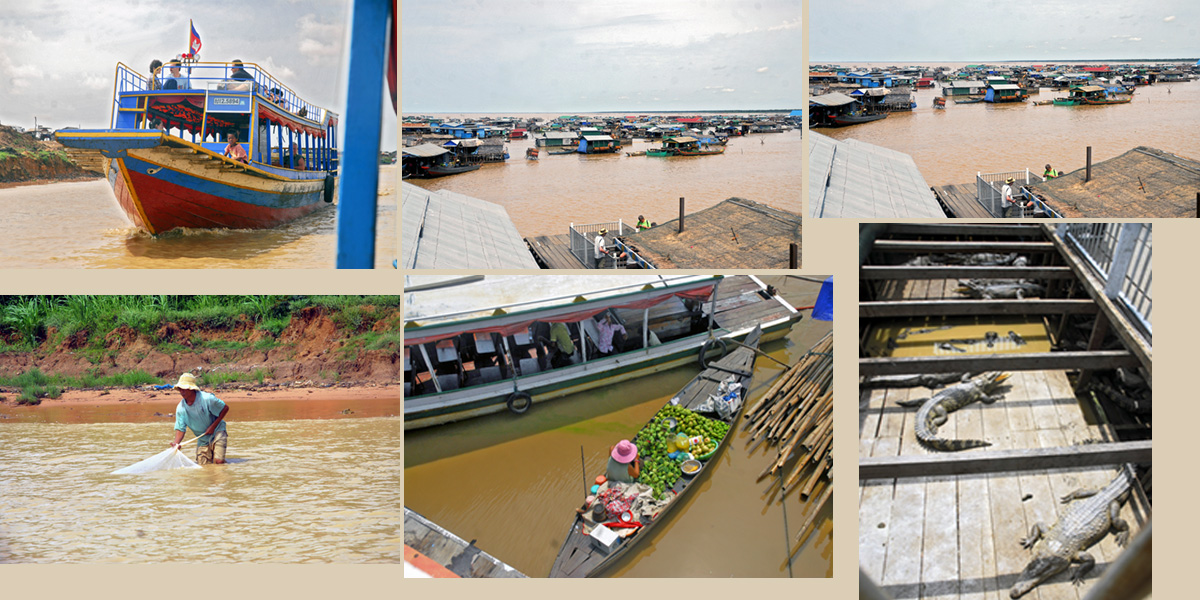
We sailed along in a boat observing the life of the people who live and work on the lake. Chong Kneas is one of many floating communities comprising homes, shops, restaurants, basketball courts, schools, and places of worship. We saw people fishing, raising crocodiles and catfish, some of which looked huge and extremely dangerous!
In the afternoon, we visited an Artisan Village where youngsters from all over Cambodia are trained to make traditional handicrafts. Once they have completed their course, they return to their villages and continue to produce crafts they learned and mastered. This gives them an income as they can sell their goods to the Artisan Village which boasts a beautiful store where tourists flock to buy souvenirs. Then we went to an Apsara dinner and dance performance which we thoroughly enjoyed.
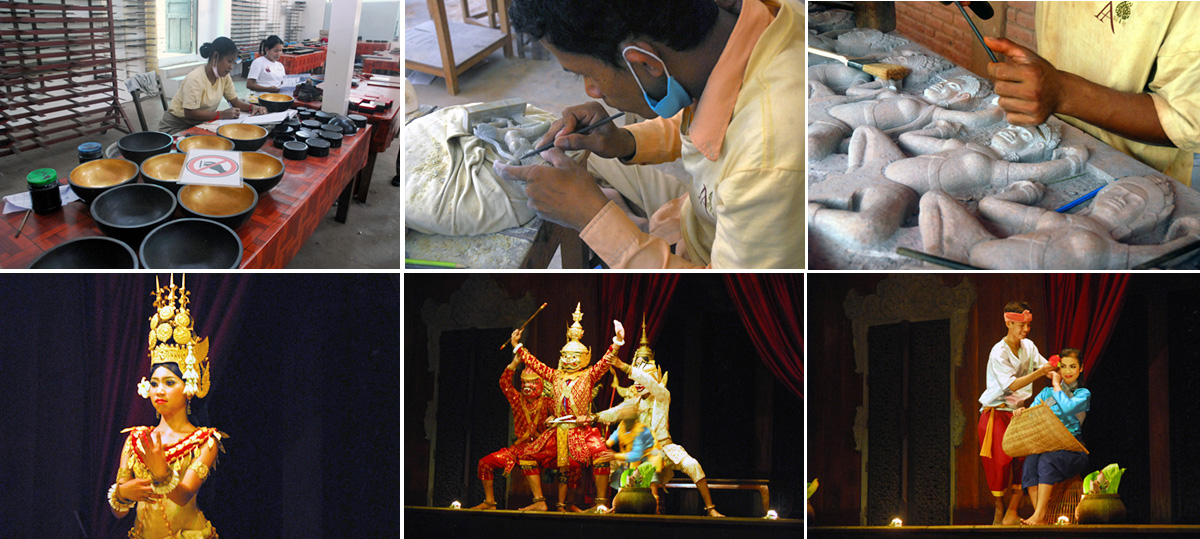
We were served delicious Cambodian cuisine and our favourite dish was “Amok” which was fish in a curry sauce served in a beautiful banana leaf boat! The dancers had wonderful costumes and were so graceful!
On our last day after walking around the temples in the searing sun, we hired a tuk tuk to drive us to Pub Street in the heart of Siem Reap. There we experienced a roadside foot massage before we went to a couple of pubs and finally ended up at a small restaurant serving Italian food! Pub Street was buzzing with restaurants, pubs, and a thriving night market.
Once again, we were thankful to be able to experience yet another glimpse into the treasures and wonders of South East Asia
More photos on Flickr.
